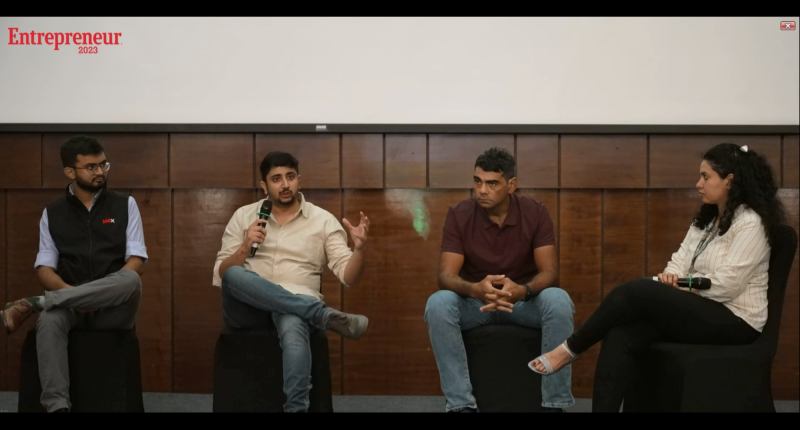
Opinions expressed by Entrepreneur contributors are their own.
You’re reading Entrepreneur India, an international franchise of Entrepreneur Media.
Emerging technologies such as blockchain, cryptocurrency, and DeFi are sure to influence industries and sectors for years to come. Collectively, these technologies make up Web3, the next evolution of the World Wide Web. The Web3 space in India and the world is still at its nascence but is equally volatile. It has the potential to change the future of tech. The founders know it, and so do investors. According to Tracxn, a market research firm, India is home to over 400+ Web3 startups.
However, the investors of the country and the world have been keeping a low profile when it comes to making new investments after bearing the brunt of free-flowing investments up till mid-2022. According to Crunchbase, a market research platform, funding nosedived from $9.1 billion in Q1 of 2022 to a mere $1.7 billion in Q1 of 2023 in the Web3 space in India. However, the lack of funding is not deterring the hopes and ambitions of Web3 entrepreneurs.
During a panel discussion on ‘Web3 101: What startup founders should know of Investors’ Perspective before raising funds’ at the Entrepreneur 2023 Summit in New Delhi, discuss about what investors look into while writing a cheque to a Web3 startup. The panel comprised Vatsal Kanakiya, CTO and Principal, 100X.VC; Akshay Aggarwal, Venture Partner, Draper Dragon Fund; and Deo Saurabh, Co-founder, We Founder Circle.
Vatsal Kanakiya of 100X.VC feels that market risk exists in every nook and corner for investors and Web3 is no different than any other. Being a Web3 native is a big factor for 100X.VC when it comes to deciding who they bet on. “We see a lot of founders come in because there is a lot of money in the space and be like okay we want to build but they are generally non-technical. While it’s great and we appreciate that they are building something in a space which is new, exciting and they have passion for it, but unless you have the skills to build it yourself it is actually going to be very tough,” shares Kanakiya. Otherwise, the investor capital largely goes towards getting talent onboard who have no personal incentive to build the idea out.
Akshay Aggarwal mirrors the feeling. The capabilities of the backed founder are extremely important, especially when they are in the face of difficulties. And in this new space, one is hit a lot faster and harder. Once the backed founders are willing to embrace and adapt, the venture capital fund opens its doors to the experienced lot of 200+ Web3 entrepreneurs. “A lot of times you’d see that the founders would have solved the same problem earlier because they were attempting to do something similar. And in Web3 you’ll see a lot of replicas because the market is so small, you don’t know how many things are working. In a way, a lot of these have common templates that they can use,” shares Aggarwal.
One piece of advice Draper Dragon Fund gives to its founders is to diversify its treasury and align risk.
Geographical and Federal risks
The risks such as geographical and federal one are also integral in nature, according to Deo Saurabh. He feels that jumping locations is not a long-term solution for start-ups when they land up on the federal radar. However, contrary to the other panellists, he feels a no-coding background can run a Web3 company, but will face more difficulties. “Start-up investment in itself is a risky proposition and on top of it, you are dealing with a much more riskier proposition. You cannot do a lot of due diligence, you do not know how the product will behave in the market. There is no way you can predict that. But ultimately it’s the gut,” shares Saurabh.
Hype cycles have been a part and parcel of the past 25 years, even dotcom in its first phase was not successful. But people, who bet on it and waited, made money. “We take a bet because we believe it will beat the average market expectations,” adds Saurabh.
Aggarwal has a strong conviction in Web3 technology and believes that the ledger is a good solution to corruption and lack of trust among citizens. “For a country where we even doubt whether voting systems are truly unbiased, I think there is a need for transparency. There is a need for a ledger you cannot tamper with. The moment things happen, you have to ensure that from the moment an IT device sends that this has happened, there is no tampering happening across the ecosystem. I feel that is where we want to reach,” notes Aggarwal.
Additionally, a lot of foreign investment is flowing in courtesy of Indian developers. Giving a chance to developers to work over CBDC will bring a lot of opportunities for the Web3 developers.
This article is from Entrepreneur.com








